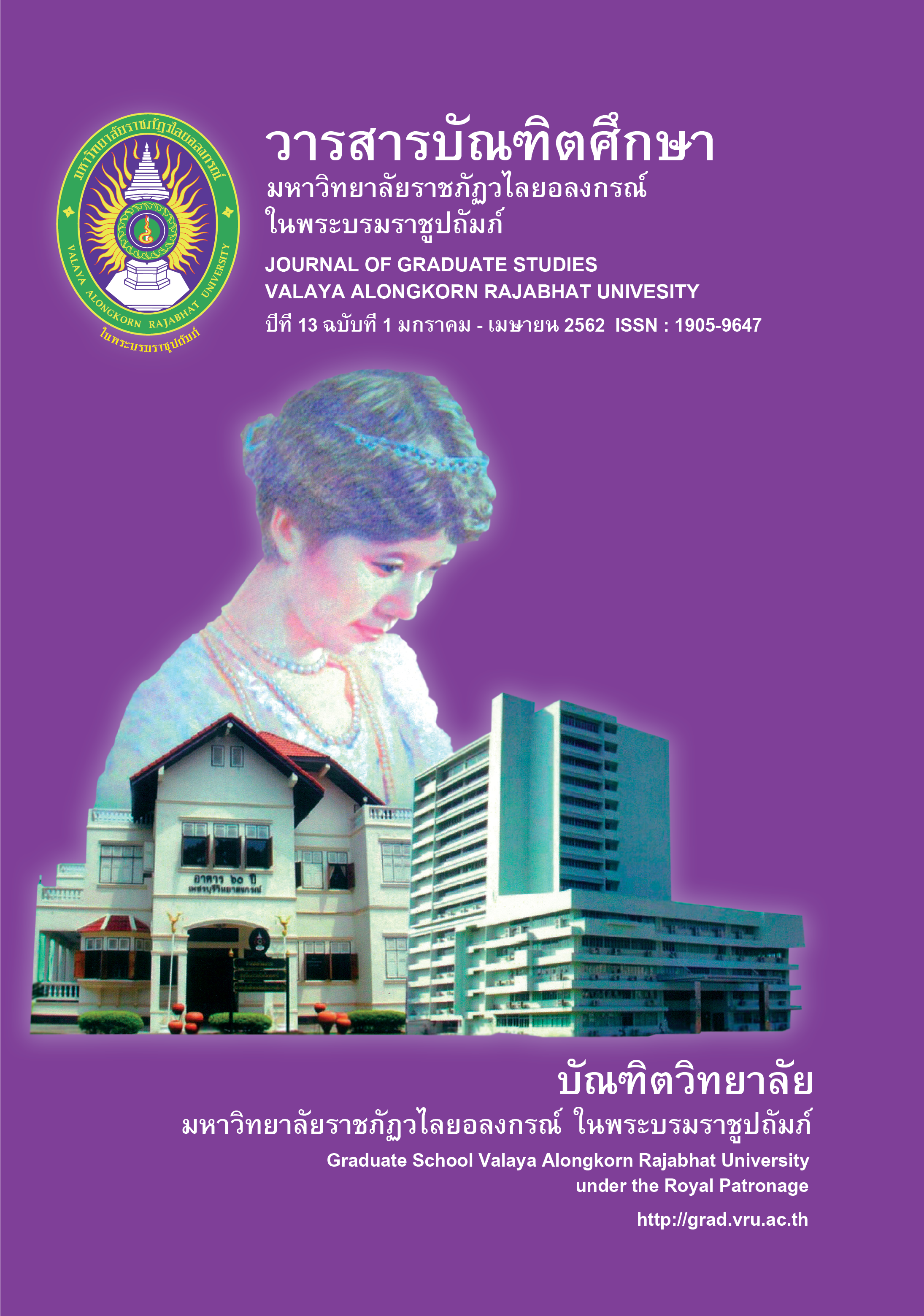USING MULTIPLE INTELLIGENCES ACTIVITIES TO DEVELOP ENGLISH READING AND WRITING ABILITIES AND ATTITUDE AMONG PRATHOM SUKSA 5 STUDENTS
Main Article Content
Abstract
The purposes of this research were 1) to compare students’ English reading ability, 2) to study the students’ English writing ability and 3) to compare their attitude towards English before and after being taught through multiple intelligences activities. The samples were 40 Prathom Suksa 5 students who enrolled in Fundamental English course (English 15101) in the second semester of the academic year 2017 at Anubaan Chiang Rai School, Mueang District, Chaing Rai Province. The research instruments consisted of 7 lesson plans using multiple intelligences activities, English reading test, English writing ability evaluation form and an English learning attitude test. The data obtained were analyzed for mean, standard deviation and percentage.
The findings of this study were as follows;
1) After using multiple intelligences activities, students’ English reading ability increased.
2) After learning through the multiple intelligences activities, students’ English writing ability passed the pre-set criteria of 50 percent.
3) The students’ learning attitude towards English increased after learning through the multiple intelligences activities.
Article Details
บทความทุกเรื่องได้รับการตรวจความถูกต้องทางวิชาการโดยผู้ทรงคุณวุฒิ ทรรศนะและข้อคิดเห็นในบทความวารสารบัณฑิตศึกษา มหาวิทยาลัยราชภัฏวไลยอลงกรณ์ ในพระบรมราชูปถัมภ์ มิใช่เป็นทรรศนะและความคิดของผู้จัดทำจึงมิใช่ความรับผิดชอบของบัณฑิตวิทยาลัย มหาวิทยาลัยราชภัฏวไลยอลงกรณ์ ในพระบรมราชูปถัมภ์ กองบรรณาธิการไม่สงวนสิทธิ์การคัดลอก แต่ให้อ้างอิงแหล่งที่มา
References
Bloom, B. S. (1956). Taxonomy of educational objectives, handbook 1: cognitive domain. Addison – Wesley Publishing Company.
Bureau of Academic Affairs and Educational Standards. (2011). nǣo patibatkān wat læ pramœ̄nphon kān rīanrū [Guidelines for learning measurement and evaluation]. Bangkok: Ministry of Education
Gardner, H. (1999). Intelligence reframed: multiple intelligences for the 21th century. New York: Basic Books.
Greenhawk, J. (1997). Multiple intelligences meet standards. Educational Leadership. 1(55), 62 – 64.
Harris, M. & McCann, P. (1994). Assessment (Handbook for the english classroom). Oxford: Heinemann Publishers.
Krashen, S. and Terrell, T. (1988). The natural approach: language acquisition in the classroom. New Jersey: Prentice Hall Europe.
Leontiev, A. N. (1981). Problems of the development of the Mind. 4th ed. Moscow: Imported Publications, Incorporated.
Ministry of Education. (2012). nǣothāng kānčhat kitčhakam kān rīanrū phư̄a phatthanā thaksa kān khit tām laksūt kǣn klāng kānsưksā naphư̄n thān Phutthasakkarāt 2551 [Guidelines for learning activities for develop thinking skills according to the basic education core curriculum B.E. 2008]. 2nd ed. Bangkok.
Rensis, L. (1932). A Technique for the measurement of attitudes. New York.
Srisa-ard, B. (2011). kānwičhai bư̄angton [Introduction of research]. Bangkok: Suweeriyasan.
Tanasuwan, W. (1993). kēm prakō̜p kānsō̜n phāsā ʻAngkrit radap matthayommasưksā [Games as supplementary activities on english for matthayomsuksa]. Chiang Mai: Faculty of Education, Chiang Mai University.

